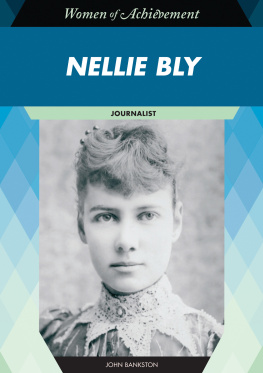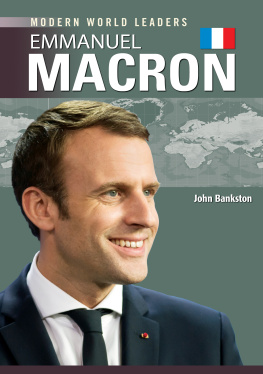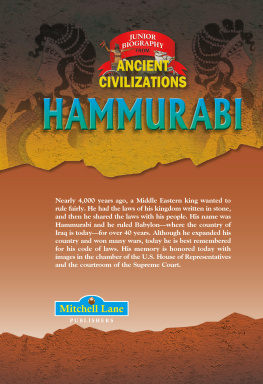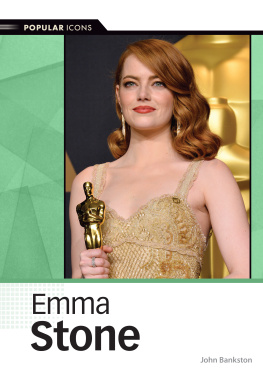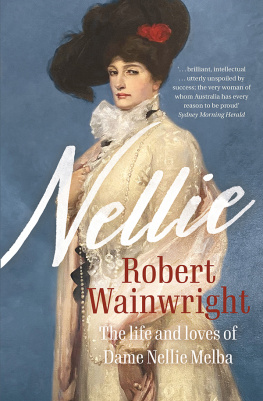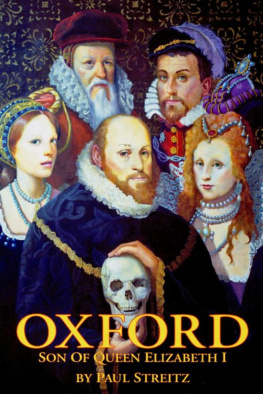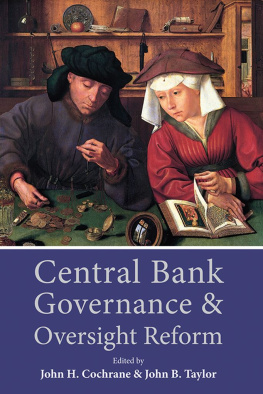John Bankston - Nellie Bly: Journalist
Here you can read online John Bankston - Nellie Bly: Journalist full text of the book (entire story) in english for free. Download pdf and epub, get meaning, cover and reviews about this ebook. year: 2014, publisher: Infobase Publishing, genre: Non-fiction. Description of the work, (preface) as well as reviews are available. Best literature library LitArk.com created for fans of good reading and offers a wide selection of genres:
Romance novel
Science fiction
Adventure
Detective
Science
History
Home and family
Prose
Art
Politics
Computer
Non-fiction
Religion
Business
Children
Humor
Choose a favorite category and find really read worthwhile books. Enjoy immersion in the world of imagination, feel the emotions of the characters or learn something new for yourself, make an fascinating discovery.
- Book:Nellie Bly: Journalist
- Author:
- Publisher:Infobase Publishing
- Genre:
- Year:2014
- Rating:4 / 5
- Favourites:Add to favourites
- Your mark:
- 80
- 1
- 2
- 3
- 4
- 5
Nellie Bly: Journalist: summary, description and annotation
We offer to read an annotation, description, summary or preface (depends on what the author of the book "Nellie Bly: Journalist" wrote himself). If you haven't found the necessary information about the book — write in the comments, we will try to find it.
At 20, Elizabeth Cochrane dreamed of being a writer, but it seemed impossible. Her father had died when she was six, and her stepfather had been an abusive alcoholic. She ha
Nellie Bly: Journalist — read online for free the complete book (whole text) full work
Below is the text of the book, divided by pages. System saving the place of the last page read, allows you to conveniently read the book "Nellie Bly: Journalist" online for free, without having to search again every time where you left off. Put a bookmark, and you can go to the page where you finished reading at any time.
Font size:
Interval:
Bookmark:
Copyright 2014 by Infobase Learning
All rights reserved. No part of this publication may be reproduced or utilized in any form or by any means, electronic or mechanical, including photocopying, recording, or by any information storage or retrieval systems, without permission in writing from the publisher. For more information, contact:
Chelsea House
An imprint of Infobase Learning
132 West 31st Street
New York NY 10001
ISBN 978-1-4381-5317-9
You can find Chelsea House on the World Wide Web
at http://www.infobaselearning.com
The decision took more than a year. When it was made, Nellie Bly had less than 48 hours to prepare for the journey of a lifetime.
In 1888, Bly was a reporter for the New York World. Like many writers, she was a procrastinator:
It was my custom to think up ideas on Sunday and lay them before my editor for his approval or disapproval on Monday. But ideas did not come that day and three o'clock in the morning found me weary and with an aching head tossing about in my bed. At last tired and provoked at my slowness in finding a subject, something for the week's work, I thought fretfully: "I wish I was at the other end of the earth!"1
Thus great ideas are born. Fifteen years before, French author Jules Verne had described a man's journey in Around the World in Eighty Days. It began with a wager. At his private club, the story's hero listened as fellow members discussed the likelihood of capturing a bank thief. After all, the thief could go anywhere, because "the world is big enough," as one noted.
"It was once," said Phileas Fogg, in a low tone.
A fellow member agreed, adding that "a man can now go round it ten times more quickly than a hundred years ago. And that is why the search for this thief will be more likely to succeed."2
The disagreement led to a bet. Could Fogg make it around the world in 80 days? Bly's late-night musings led her to consider a similar expedition. Fogg was a fictional character. Making the trip for real as a single woman required two things: luck and the support of her paper. In 1888, Nellie Bly was short of both.
"The idea of a trip around the world pleased me," Nellie Bly later wrote. "If I could do it as quickly as Phileas Fogg did, I should go."3
The creation of author Jules Verne, Fogg might never have existed to inspire Bly if Verne had succeeded in the family profession. In 1848, the 20-year-old Verne enrolled in law school with an eye on joining his father's firm. Although he passed his examinations, the future novelist was not very successful as a lawyer. In 1857, shortly after Verne married a widower with two young daughters, Verne's father bought him a seat on the French stock exchange.
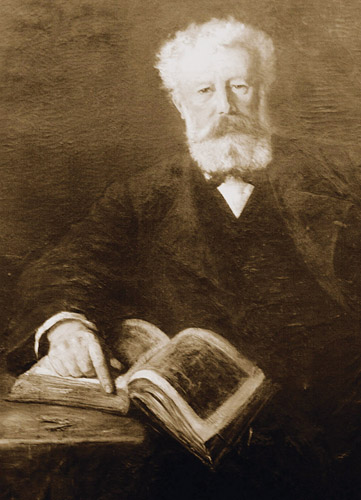
In his popular novel Around the World in Eighty Days, French author Jules Verne created the character of Phileas Fogg, whose heroics circumnavigating the globe inspired journalist Nellie Bly. Stuck for ideas for an article, she pitched a proposal to beat the fictional Fogg's time in traveling around the world.
Source: Maxppp/Landov.
Attending law school, practicing law, and in the early morning hours before leaving for work as a stockbroker, Verne wrote. He wrote short stories and plays. None found much of an audience.
He began to write a book after attending meetings at Le Cercle de la Presse Scientifique, a literary club with a scientific bent. He listened as fellow member Flix Tournachon (who was a famous photographer under the name Nadar) described a hot-air balloon he planned to build that would carry a two-story passenger cabin. Inspired by Tournachon's descriptions and two stories from Edgar Allan Poe featuring balloon travel, Verne crafted a nonfiction work incorporating his love of geography and the exploits of recent explorers. In the early 1860s, he hoped his examination of how a piloted balloon could uncover the source of the Nile River would make him a published author.
Unfortunately, one publisher after another rejected it. After the fifteenth rejection, Verne tossed the manuscript into his fireplace. His story was nearly incinerated, but his wife intervened. She pulled it from the flames, insisting he not give up. A few days later, helped by a friend's introduction, Verne met the publisher who changed his life.
Pierre-Jules Hetzel read the book but shook his head as he put it down. Verne prepared for another rejection. Instead, the publisher asked if Verne could turn it into a novel.
Verne did not hesitate. He agreed, signing a 10-year contract for one to two books per year. Some would be serialized in Hetzel's magazine, others published as stand-alone novels. The books were so successful that the contract was regularly extended. Verne eventually contributed some five dozen books to the "Extraordinary Voyages" series over a period of 60 years (including nine published after his death).
Verne did not wait to see if his first novel would succeed. After telling his wife the good news, he quit his job.
The author was not the first to use science in fiction, but as critic John J. Pierce notes, "Science and technology, which had been peripheral to the travel tale when they appeared at all, were now placed at the center and combined with the elementary appeal of romantic action and adventure."4 Verne himself realized he had developed a new genre, one that could make him very, very rich if it succeeded.
It succeeded. His first novel, Five Weeks in a Balloon, sold well, as did the ones that followed, including A Journey to the Center of the Earth, From the Earth to the Moon, and Twenty Thousand Leagues Under the Sea. Ten years after writing his first novel, Verne published the book that made him rich. Around the World in Eighty Days quickly sold more than 500,000 copies, was widely translated, and inspired journalist Nellie Bly. Like Verne's hero, Phileas Fogg, she too encountered numerous obstacles along the way.
Nellie Bly scarcely slept. Late the next morning she arrived at a steamship company, and after consulting the scheduled departures and arrivals, Bly admitted, "If I had found the elixir of life, I should not have felt better than I did when I conceived a hope that a tour of the world might be made in even less than eighty days."5
Her next stop was the New York World. She had begun to write for the paper by going undercover at a mental hospitalposing as a patient for nearly two weeks. The abuses she described led to a grand jury investigation.
Bly faced her editor. "Have you any ideas?" John A. Cockerill asked.
She replied, "I want to go around the world in eighty days or less. I think I can beat Phileas Fogg's record. May I try it?"6
He was enthusiastic. There was just one problem. A male reporter had already pitched the idea. Bly convinced her editor that a woman making the journey would be more newsworthy.
Armed with her editor's support, the two met with the newspaper's business manager. George W. Turner unearthed more obstacles. Charged with keeping expenses down, the business manager believed her trip would cost twice as much as a man's. Single women needed chaperones, he argued. They also brought so much luggage that they would miss train and ship connections.
Bly was enraged. She did not need a chaperone. She would make do with a single bag.
"Very well," she said. "Start the man, and I'll start the same day for some other newspaper and beat him."7
Font size:
Interval:
Bookmark:
Similar books «Nellie Bly: Journalist»
Look at similar books to Nellie Bly: Journalist. We have selected literature similar in name and meaning in the hope of providing readers with more options to find new, interesting, not yet read works.
Discussion, reviews of the book Nellie Bly: Journalist and just readers' own opinions. Leave your comments, write what you think about the work, its meaning or the main characters. Specify what exactly you liked and what you didn't like, and why you think so.

